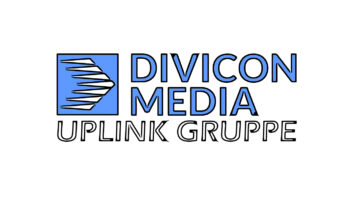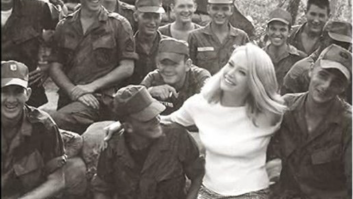This is one of a series of interviews from the recent Radio World eBook “HD Radio and the Case for ROI.”
Paul Brenner is president of the Broadcasters Traffic Consortium, a coalition of U.S. and Canadian broadcasters that sells data delivery capacity to third parties, using member stations’ HD Radio and analog RDS-TMC subchannels, and returning revenue to its member stations. According to its website, the network has more than 1,500 FM stations, over 1,200 of which are HD-capable: “Our signal coverage surpasses any other HD Radio offering,” it states.
Brenner works at Emmis Communications, one of BTC’s founding members, and is president of Emmis subsidiary NextRadio/TagStation.
Q: You touch this topic of HD Radio in a number of ways. What’s your feeling about the ROI argument for small- to medium-market stations?
A: There’s always going to be the audio discussions, the value of audio quality and multicast channels either as programmed by the station for additional inventory or as an asset that can be rented or sold. As more cars are on the road, that will continue.
When I started this data opportunity, it was 2007. I had to convince a group of about eight broadcast leaders, top CEOs, that someday the data that HD Radio can deliver could possibly be more valuable than the audio that it can deliver. It’s taken me almost 10 years to get to this point.
But I do believe that in the world of on-demand feel and user choice — the way that a smartphone has driven behavior — you need more payload. Every bit gets used. Automotive data needs are a good example for HD Radio as the most efficient way for utility information to reach an entire market of people 24/7/365.
Back in 2007 we launched with the ROI benefitting the bigger markets, and have moved into markets needed for road coverage links, corridors, between the markets. Now as we win more automakers, and more of our customers are paying for the data, we’re down now into the medium [markets], and looking for more small markets that are willing to participate in the [BTC] network.
The ROI may not pay for their [digital] transmitter, as you might say; but it definitely puts some money in their pocket — enough to cover expenses for operating HD Radio and some extra money on top of that.

BTC coverage map of Ann Arbor, Mich.
Q: How much money are we talking?
A: We don’t give out dollar amounts. The ranges are from five to mid-six figures annually.
Q: Is BTC actively looking to expand its footprint in membership?
A: Yes, and our expansion is always driven by the automaker interests. We have the win with Hyundai which is now public, and there are more coming. [Mapping and location technology company HERE LLC, BTC’s data partner, recently announced that Hyundai has added its HD+ Traffic service to some 2017 models; it will be delivered via HD Radio on BTC stations.] For every automaker we add, there are more “asks” for additional markets, for robust coverage in the existing markets — meaning diversity of signals, being able to operate a network of “always up and available” content.
We’re definitely looking for more [stations]. We’re somewhere around 120 markets of coverage right now. We probably want to be up around to 150 to 160 markets of coverage.
Q: How many stations that is?
A: Hundreds. It’s at least redundancy in every market, and often multiple redundancies and the coverage contours. Between two and five signals per market. We’re looking for more folks to become a part of it.
We’re not going to outright “pay” for a transmitter for somebody; but if a broadcaster is looking to invest in HD Radio and see some form of revenue from that, they should definitely talk to us.
Q: Do potential partners come back with other uses? Do they say, “Well, I’d do better to do a translator with my HD signal”?
A: Often. But it’s additive, right? People are looking for answers to quite a few questions — the ROI to at least cover operating expenses, but then [also], “How am I going to use the multicast channels? For diverse content, or to feed a translator, broadcast my AM content?” We inevitably ensure that what we require from the broadcaster for BTC data will work within that list of things.
Often, broadcasters are confused because of limitations of older analog technology. HD Radio actually is quite flexible. You don’t have to pick one or two of those things, you can do all of these things to identify your ROI. Maybe that’s serving album art to these new HD Radio Artist Experience cars, maybe it’s one or two or three audio multicasts plus our traffic data.
Q: Do you think there’s a lot of growth yet to come in HD Radio or has the big growth has already happened?
A: I think the growth curve on the auto side is yet to happen. That’s coming probably in the next one, two, three years, just by the nature of how long it takes. But I think the use of it is yet to really blossom. We’re early adopters.
When I asked for these resources from the broadcasters in ‘07, ‘08 and ‘09, it was a no-brainer: “Oh sure, take it,” like, “I’m not doing anything with it.” Today, when I go back to those companies, now they negotiate. They have other people wanting the resources. There’s a good indicator that the market’s maturing.
Here’s another example. We’ve been pretty successful with what we’ve done with HERE, and this is just traffic, weather, fuel. Then a very large automaker reached out to me and says, “Do you think your industry would be willing to build a common, singular network for the distribution of safety recall data? I’ll build that into all my cars if your industry will provide that network for always broadcasting safety recall data to cars.”
Q: So what happened?
A: Nothing. I can’t represent that. I don’t have enough coverage to do that. So somebody else would have to jump in the ring with us. Right now iHeart’s TTN and BTC are the two. The groups would probably have to collaborate, right? To deliver something like that, especially in the top 100 markets.
People are really looking to the capability of the data, but nobody could really deliver that at this time.
Q: About ROI models. BTC is one. Translators are a well-known one. Are there others?
A: Are you counting the lease of side channels? Emmis as a radio company has done pretty well with them. We’ve covered WorldBand Media for a long time, the Bollywood format. There’s always ethnic groups looking for that kind of thing.
I know people have tried different things in the emergency alerting business, in other kinds of data. Over-the-air flash firmware kind of technologies have been tried and haven’t really gone anywhere because there’s nobody championing those things. I’ve seen some luxury vehicles updated as a prototype through HD Radio data services. They’re not real businesses; they’re just things people have tried but nobody monetized them.
Q: Could we see people access capacity on HD2 and HD3 channels through some kind of programmatic advertising system?
A: Wouldn’t the perfect example of that be what HD Radio did themselves by buying the rights to Radio Disney? [In 2015, iBiquity, then the owner of HD Radio, announced that its HD Radio Digital Network sales team would manage ad sales for Radio Disney content airing on multicasts of participating stations, this after Disney sold off most of its owned stations.] They said, “Hey, I’m the owner of the relationships with the broadcasters. I happen to know who has multicast channels available. Why don’t I buy a defunct Radio Disney broadcast operation and just put it on multicast?”
Q: What else should we be asking?
A: There’s an often undiscussed but unique advantage to being supportive of the HD Radio technology. The BTC’s work with the automakers is a great example. For Hyundai, we beat satellite, we beat connected car, we beat our competitor TTN, as our industry being the most efficient and cost-effective way to send this mass market data to the car.
The more you can demonstrate that kind of unified result, you can [worry] a lot less about, “Oh boy, the radio might go away in the car someday.” If the industry across the board is showing progress and trying to innovate, that actually speaks volumes; more than touting our listener reach.
Q: Speaks volumes to the car makers, specifically.
A: Yeah. The people that are deciding your fate.
There’s all this talk [that] “Oh, the future of the car’s at risk! The autonomous car! The Android Auto! The CarPlay! They’re going to obfuscate the console!” Well, it’s being done because of demand, right? A carmaker’s never going to remove radio if they always feel the consumer and the market demand it. Keep giving people a reason and you won’t go anywhere; but if you don’t, you probably are going to go somewhere.












